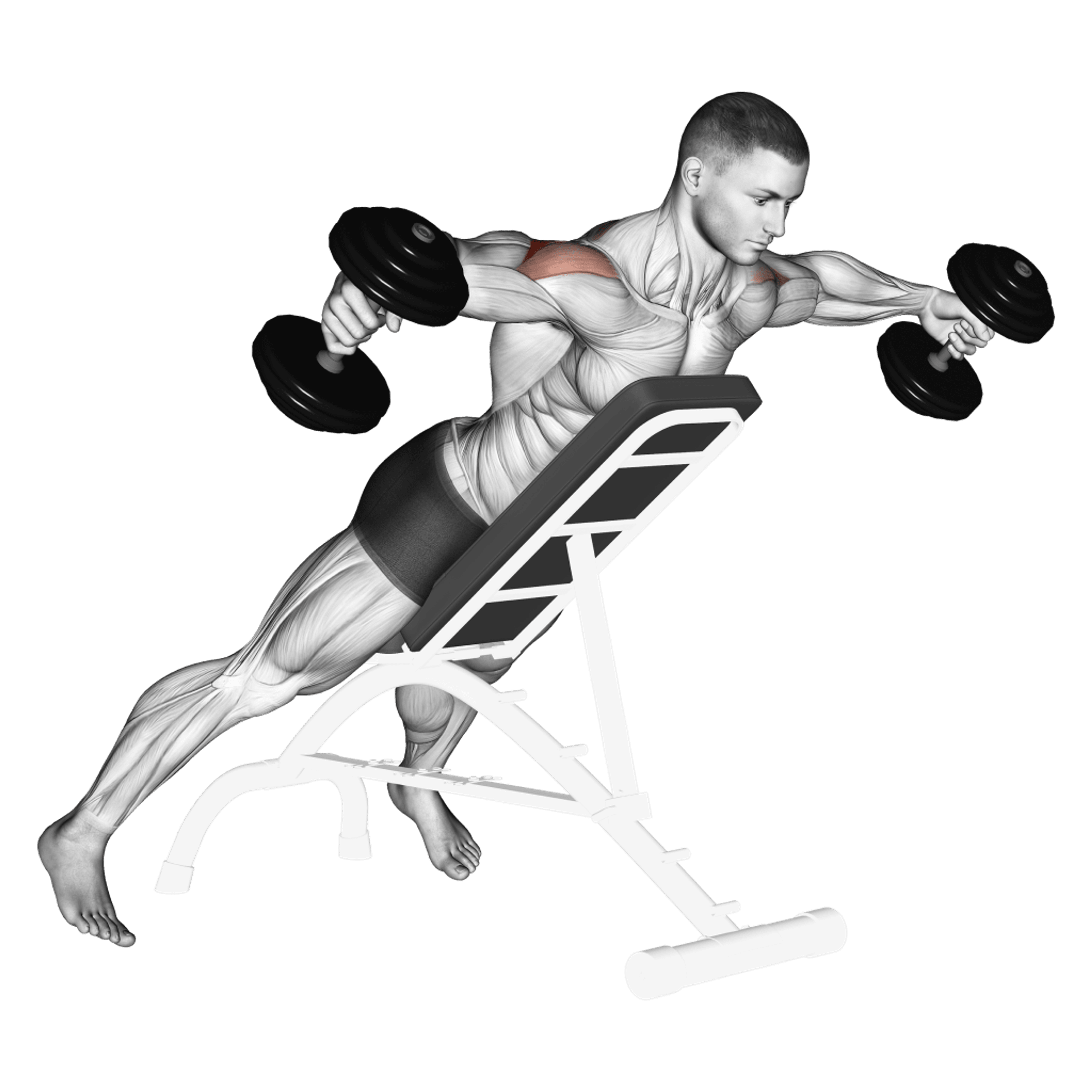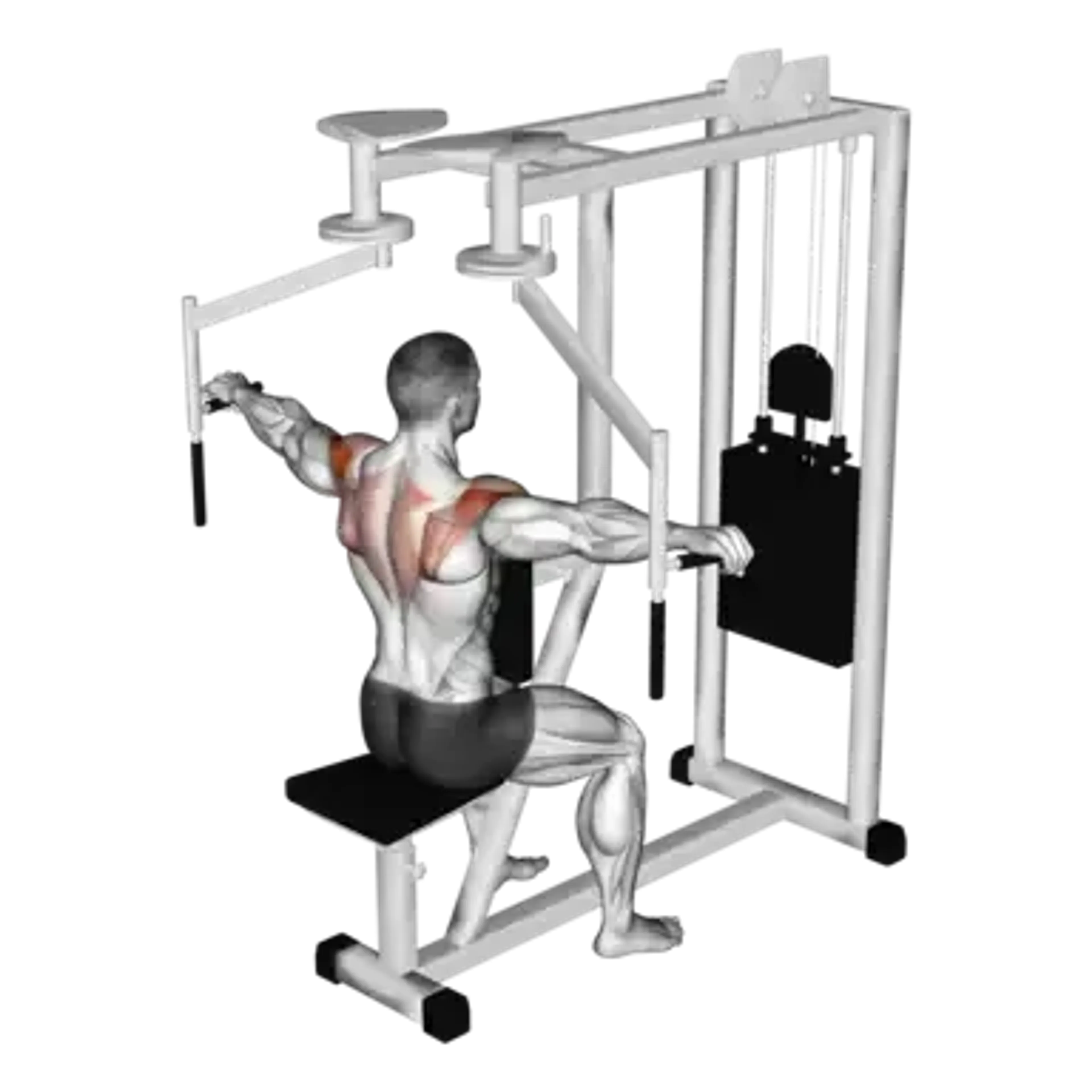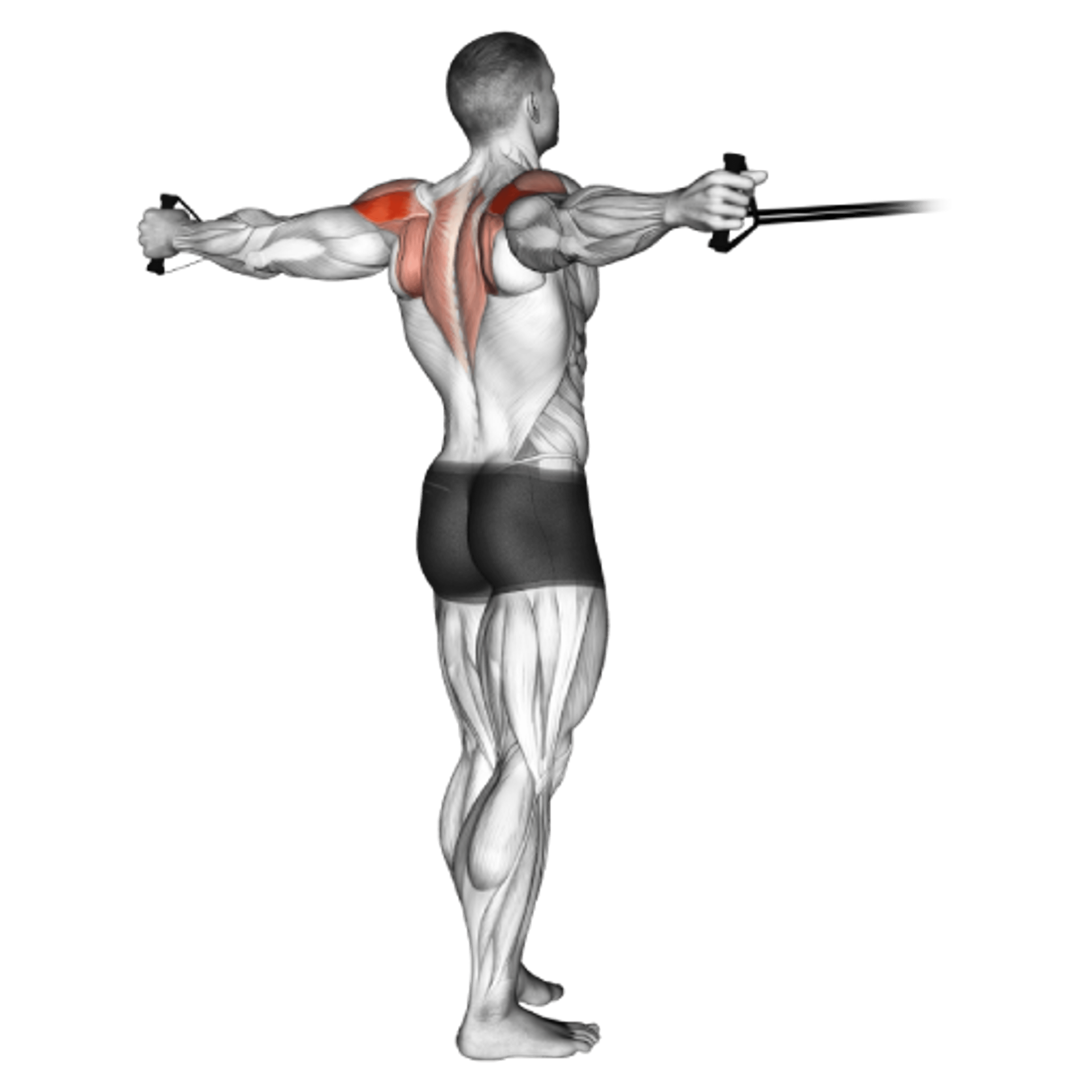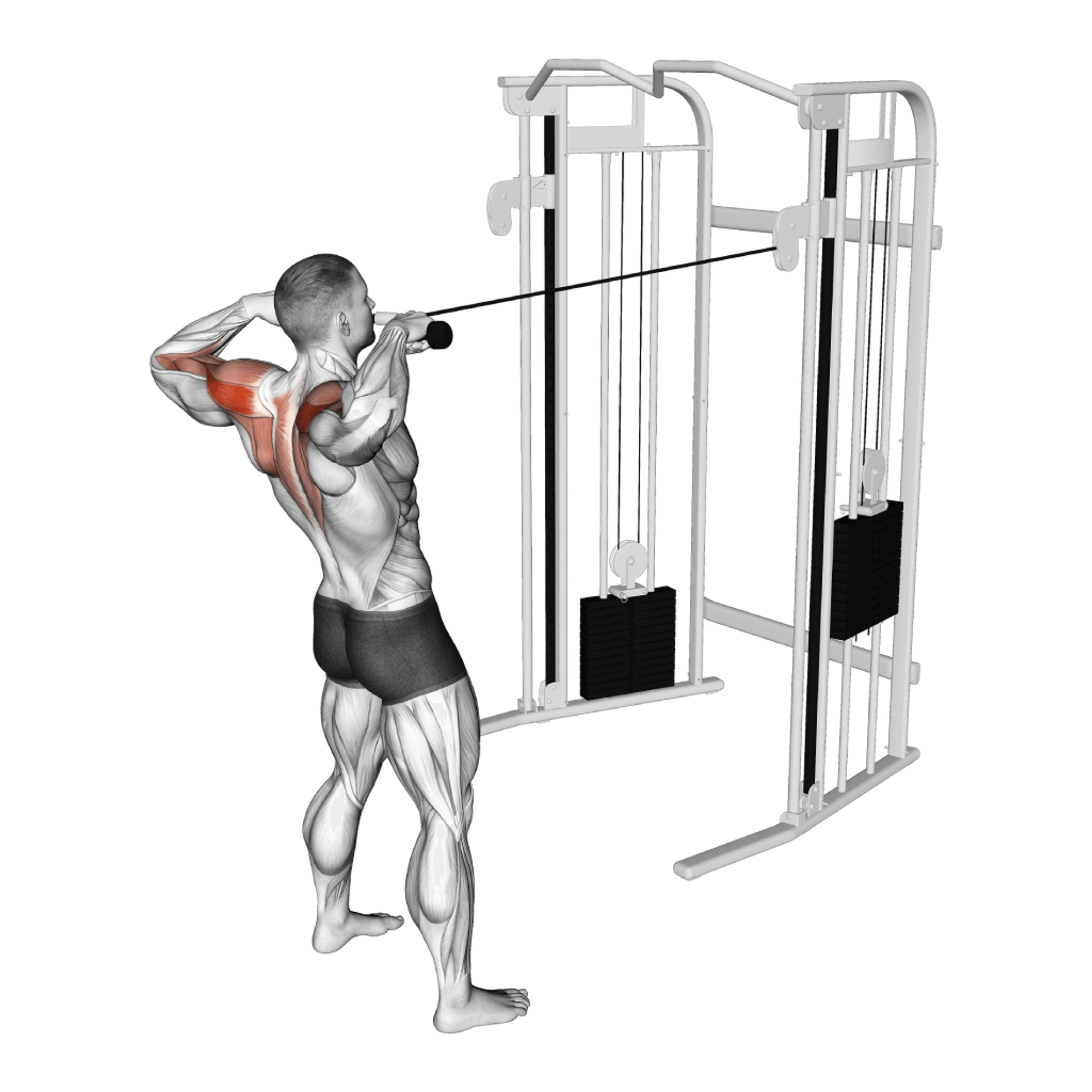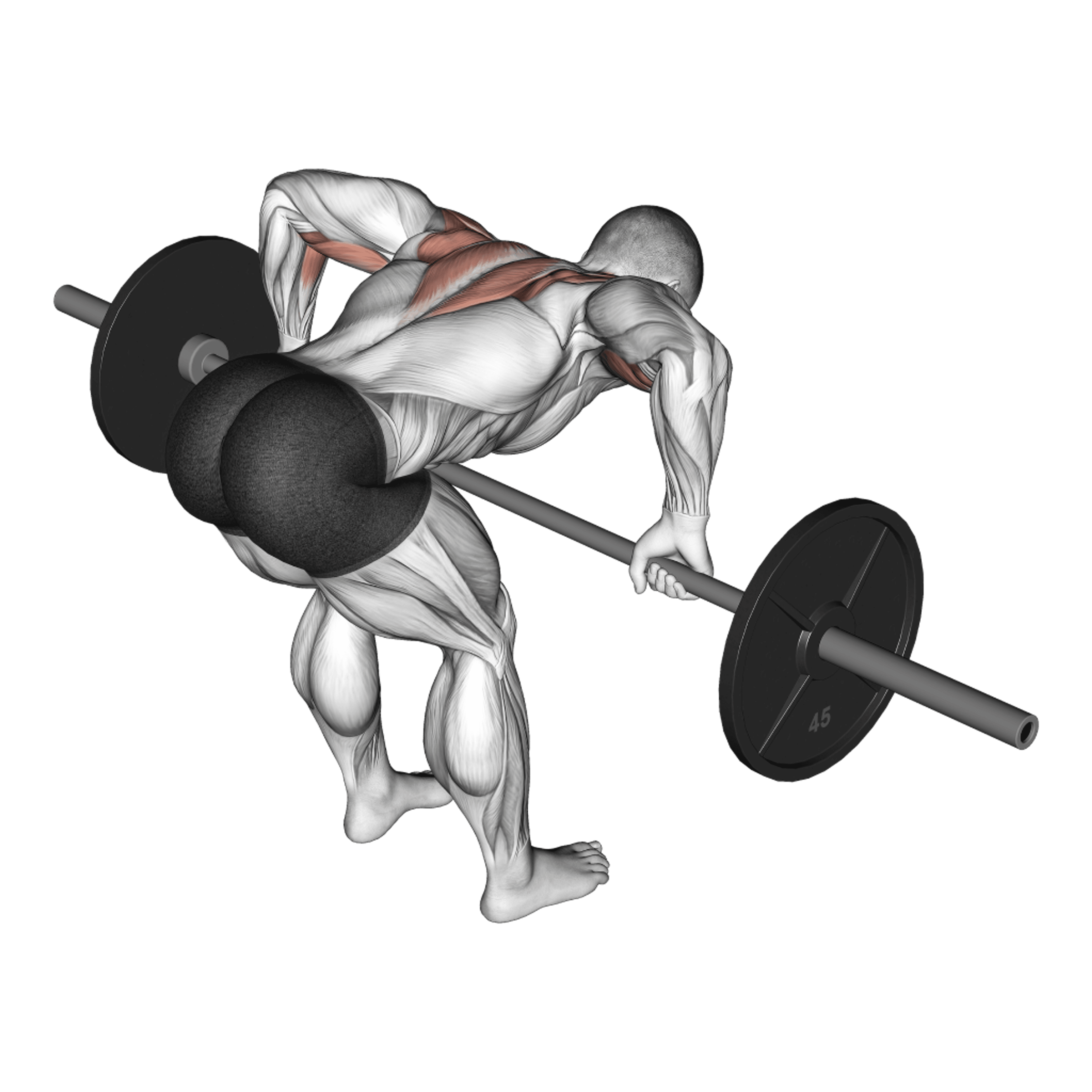Cable Reverse Fly
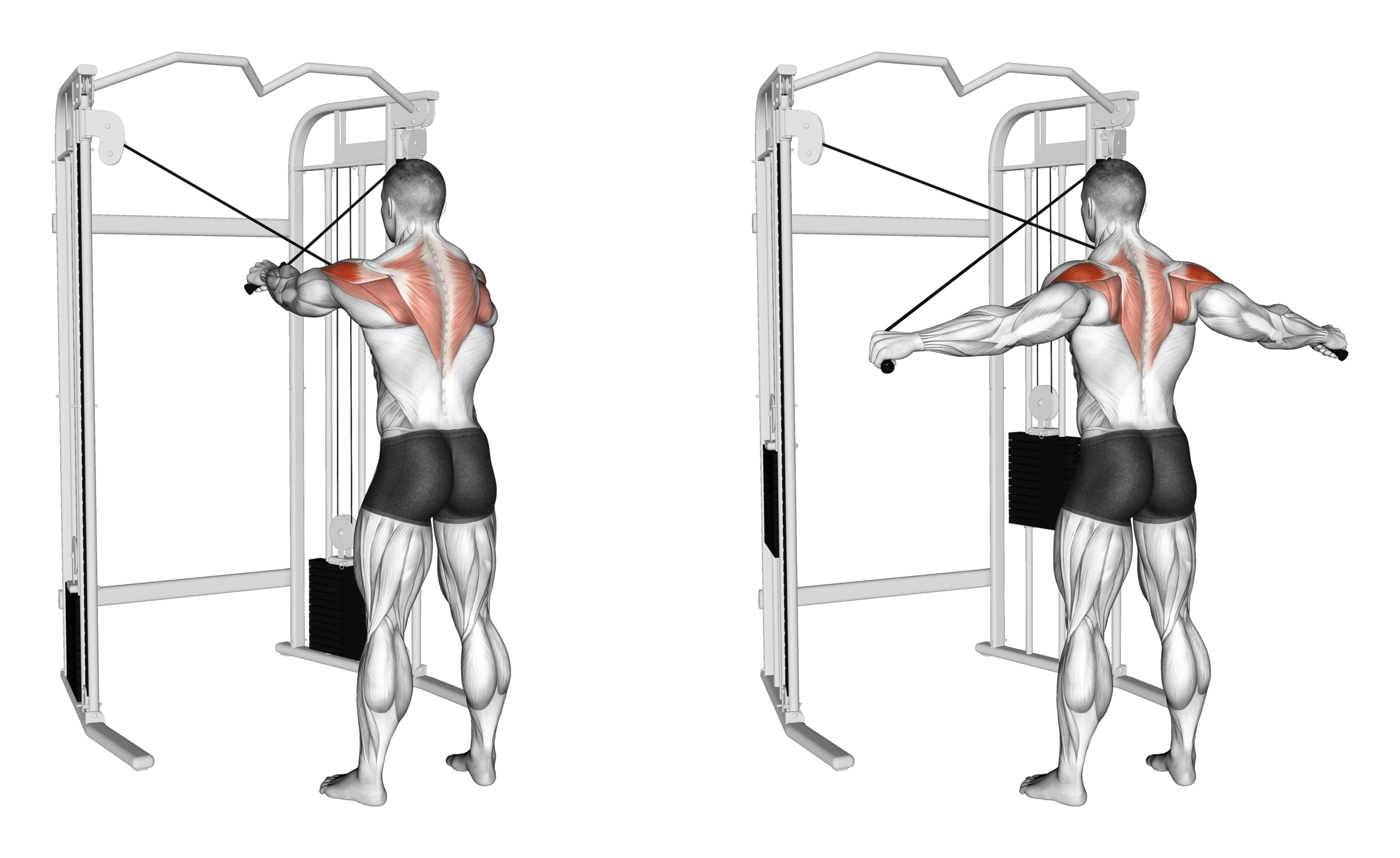
Overview
- Primary Focus:
- Shoulders.
- Equipment:
- Cable.
- Difficulty:
- Intermediate.
General Information
Cable Reverse Fly is an isolation exercise that primarily targets shoulders and also engages back. It is an intermediate-level movement that emphasizes the rear delts and scapular control while allowing precise load adjustment with cables.
Use it to build rear-delt hypertrophy, improve posture, and balance front-to-back shoulder development. The continuous cable tension helps keep the target muscle loaded through the full range, including the end position where many free-weight variations lose tension.
It works well in both home and commercial gyms with a cable station. Choose lighter loads to prioritize feel and control over absolute weight—focus on spreading the handles and pulling the shoulder blades out and around, not just moving the hands outward in space.
Lifters often use this as accessory work after pressing or rowing. Expect a strong burn in the rear delts with a stable torso and minimal momentum; if you feel it mostly in the upper traps, reduce load and slow the tempo to re-center the rear delts and mid-back.
Muscles Worked
- Deltoid
- Primary
- Infraspinatus
- High
- Teres Minor
- High
- Lower Trapezius
- Medium
- Rhomboid Major
- Medium
Instructions
- Set the pulleys slightly above shoulder height and attach single handles. Stand centered between stacks.
- Grasp the left handle with the right hand and right handle with the left hand so the cables cross in front of you. Step back to create light tension.
- Set a slight hip hinge, brace lightly, and keep a soft bend in the elbows throughout the movement (do not curl the arms).
- Initiate by spreading the handles apart and around your body, focusing on rear-delt contraction and shoulder blade movement, not shrugging the traps up toward the ears.
- Stop when hands are roughly in line with or slightly behind the shoulders without hyperextending the low back. Pause briefly with control and tension in the rear delts.
- Return along the same path under control, letting the shoulder blades wrap forward without losing torso stability or bouncing the weights off the stack.
- Keep reps smooth and consistent; reduce weight if you feel neck strain or need momentum to finish the set.
Common Mistakes
Injuries
Cable Reverse Fly is a low risk exercise when performed with proper technique.
Common strain points include the upper traps and the back of the shoulder when load is too heavy or the movement turns into a shrug. Prioritize a stable torso, soft elbows, and smooth tempo to keep tension in the rear delts and mid-back instead of your neck.
If discomfort appears in the front of the shoulder, reduce range slightly and control the last third of the eccentric. Regress to lighter loads or a higher-rep set if you cannot keep the elbows position consistent without swinging.
Alternative Exercises

Frequently Asked Questions
- Q: What pulley height works best?
Slightly above shoulder height suits most people. Adjust one setting up or down to find the path that lets you feel the rear delts without shrugging.
- Q: Should I cross the cables?
Crossing helps create tension at the start and a consistent line of pull. Keep the cross comfortable and avoid overstretching the front of the shoulder.
- Q: How heavy should I go?
Pick a load that allows clean control for 10–20 reps with a short pause at peak. If your neck takes over or form drifts, reduce the weight immediately.
- Q: Is a slight hinge necessary?
A small hip hinge can line up the cables with the rear delts and reduce trap involvement. Keep the spine neutral and avoid leaning further as you fatigue.
Overview
- Primary Focus:
- Shoulders.
- Equipment:
- Cable.
- Difficulty:
- Intermediate.
